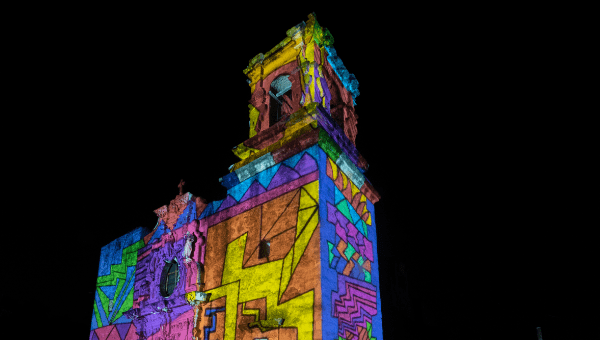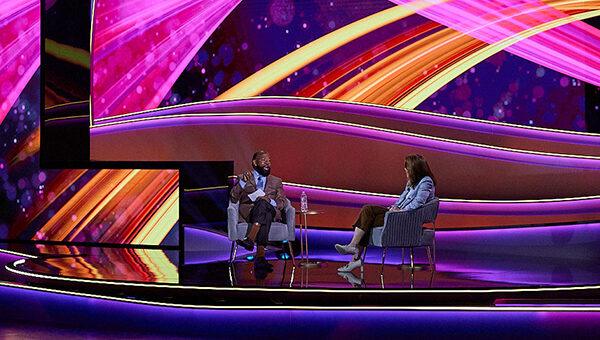Your best booth: Exhibit stand design best practices
At a Glance
Understanding the standard U.S. trade show booth
Selecting a booth for a U.S. trade show
Knowing booth design best practices
Getting your booth design right — with health and safety in mind
Exhibiting is back! Yes, most events have been on pandemic pause, but we’re seeing in-person events and trade shows return all across the world. So it’s never too early to start thinking of your next exhibit stand, particularly if you’re considering a showing in the U.S.
Events look different everywhere these days, but what you’ll see in the U.S. has other unique aspects beyond the latest health and safety protocols. And speaking of, make sure you incorporate those guidelines to ensure a safe experience for your team and your audiences.
You may be more accustomed to the European style of trade shows. In our pre-COVID world, that style included rows of office-like shell schemes, complete with walls, fascia, a name board, and carpet as well as schemes with lounge furniture and functioning kitchens. In America, the setup was vastly different: streamlined rows of similarly shaped booths, the sightline unbroken from one booth to the next.
Now both scenarios are changing to accommodate health and safety protocols along with social distancing.
Regardless, for an international exhibitor coming to a U.S. show for the first time, these differences pose a logistical and budgetary challenge that must be confronted and dealt with head-on.
Understanding the Standard U.S. Trade Show Booth
Our lookbook helps you discover just how easy it can be to engage visitors with exhibit stand graphics and memorable digital displays — yes, you can go high-tech on a budget!
In most U.S. venues, the show organizer will determine the baseline packages for trade show booths, which means the options for booth size and location will vary by show. Typically, though, exhibitors will have up to four options for booth location: in-line, perimeter, peninsula, or island.
These are common options around the world, but in case you need to brush up on what they mean, here’s a brief overview:
- In-line booths, also sometimes called linear booths, are arranged in a series along a straight line, usually with only one side opened to the aisle; the booth may or may not have walls on the lateral sides. In-line booths are usually the least expensive option but most restrictive for design.
- Perimeter booths are in-line booths that sit along the perimeter walls of the exhibit hall. These booths often have a higher back wall height, which may provide you with more design flexibility.
- Peninsula booths sit at the end of an aisle and are exposed to traffic on three sides. These booths will have more visibility than in-line booths and possibly more flexibility with height and layout options.
- Island booths sit in the middle of the show floor and are exposed to traffic on all four sides, maximizing the visibility and traffic to your booth.
- The most common and affordable option will usually be a standard in-line booth space, 3m x 3m or 3m x 6m (10’x10′ or 10’x20′). Some standard booths will also include a 1.5-metre (six-foot) table, two chairs, and a carpet — all at the discretion of the show organizer.
However, be aware that U.S. trade show organizers take sight lines very seriously. They typically won’t allow in-line booths to have high side walls that obscure the view.
Also, unlike the hard-shell walls favored in Europe, standard American booths almost always come with a pipe-and-drape kit, which is a metal post frame on which a back curtain and side drapes are hung. The curtain and drapes are usually neutral colors, like black. Graphics won’t adhere to pipe-and-drape booths the same way they do to hard-shell schemes, so you may need to come up with new ways of showing off your eye-catching displays.
Quick tip: Most stands in the U.S. do not feature a raised floor. It is allowed, but not common. Keep that in mind when it comes to your design – and if you do opt for a raised floor, consider the additional material handling costs.
Exhibit hours are typically shorter in the U.S., so think carefully about what the goals are for the booth. For example, if your goal is to drive conversations with attendees, you’ll need to plan creative ways to make a quick impact that encourages attendees to slow down and engage with you in the booth. This tactic will be even more important now that there will be social distancing and possibly fewer people on the floor.
How to Select a Booth for a U.S. Trade Show
When purchasing or renting a booth for a U.S. event, you’ll need to be crystal clear on the details. For example, U.S.-based printers use imperial measurements (i.e., inches and feet). If you’re planning to print graphics on-site, be sure to make the necessary conversions in advance to avoid any sizing surprises.
Many international exhibitors choose to get around sizing and other issues by renting exhibit booths. This can be a cost-effective option; rental booths can usually be customized to fit your brand style, and many companies even offer programs that can support multi-city tours. With this turnkey approach, the rental company will deliver exactly what you need directly to the event location, eliminating the cost of shipping, storage, and custom fees.
It’s worth noting that, although some rental companies may offer European-style hard-shell schemes, they are often expensive, and you’ll still need to comply with the show rules regarding sight line obstructions.
Best Practices in Booth Design
With your space and booth selected, it’s time to make the space your own. Even rental booths can be customized to fully represent your brand. Here are some tips and tricks for design that dazzles.
- Be consistent. Don’t overhaul your brand identity because you are coming to the United States. In fact, lots of folks may be attracted to your booth if it’s distinctly NOT American. Be sure that your booth design, materials, and messaging match what attendees will find if they visit your website.
- Be direct. Make sure the design of your booth, your messaging, and your materials clearly articulate what your company specializes in. You only have a few seconds to get your message across — so be simple and clear!
- Be unique. Stand out from the crowd! Don’t be afraid to tap into some of the bolder colors in your branding. And definitely incorporate digital elements into your offerings. Anything that catches the eye and draws attendees in — as long as it’s on-brand — is a win.
- Look up. Consider overhead signage to add some vertical interest to your booth. Just be aware that this will require tapping into rigging, a service provided by skilled laborers.
- Look down. Many show organizers provide carpet, but not all of them. And sometimes, supplying carpet for your booth is a requirement. If you work with a rental company, all of that can typically be ordered with one vendor, saving time and hassle.
- Be prepared. Think about what else you might need in your booth. Storage? A meeting space? Power? Take all of your requirements into consideration when working on your booth design.
Getting It Right
The U.S. represents rich opportunities to connect with profitable new audiences. But exhibit best practices and audience expectations are simply different in the United States. It’s therefore not wise to assume your current booth strategy will carry over seamlessly from one country to the next.
Instead, ask careful questions to make sure you’re able to achieve your brand’s goals within your budget.
An experienced local exhibit partner like Freeman can help you understand exactly what’s expected, so you can avoid costly and frustrating snags. We can provide hands-on support, ensuring you don’t forget a thing throughout the entire process!
With the right approach, you’ll enjoy a stress-free experience that allows you to focus on what really matters: growing your brand and expanding into the exciting U.S. market.
Want more?
Reach out and let us know how we can help.



